A New Era Begins
The rallying cry is, “Let’s change healthcare!” From all corners of the medical universe, there is agreement that change is necessary. The biggest questions are, “What is the change?” and, “Who will make it happen?”
Lost your password? Please enter your email address. You will receive a link to create a new password.
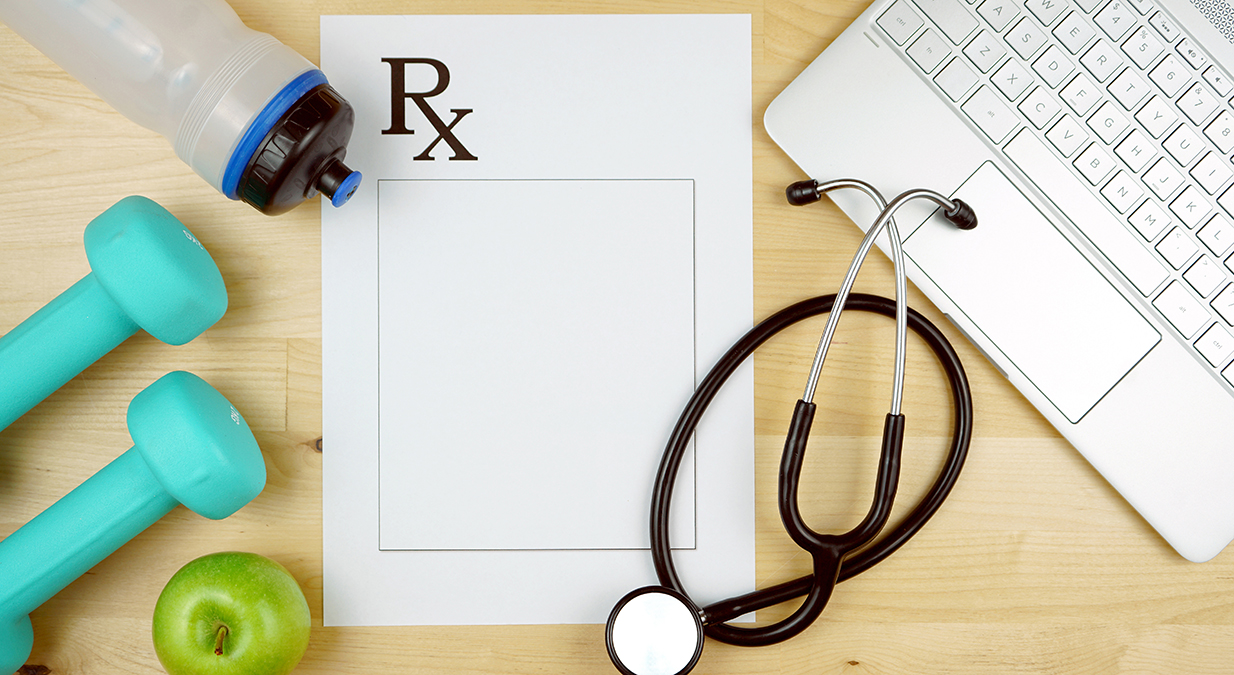
The rallying cry is, “Let’s change healthcare!” From all corners of the medical universe, there is agreement that change is necessary. The biggest questions are, “What is the change?” and, “Who will make it happen?”

Health can be defined in a variety of ways.

There’s no right or wrong definition of health. It’s all what’s of most importance to you. However, unless you take a moment to reflect on and define it for yourself, you may by default be guided by your physician’s goal for your health.
Their goal is well-intended and certainly well researched, however, without the understanding what’s most meaningful to you in terms of your health, you’re likely following a standard protocol. They may get you 90% of the way to your health, not realizing it’s the last 10% beyond the standard protocol that enables you to achieve what is most meaningful to you.
As we’ve entered into a New Year when health goals are more at the forefront of our minds, it can be an inspirational time to determine what health means for us.
A vision helps you determine what you’re aiming towards.
You can then communicate a clearly defined vision with your health care providers, so they can support you in achieving your goal.
So, what does this look like?
As a nutrition coach, I always take new clients through this process.
What goal comes to mind first?
Generally speaking, the most popular answer is weight loss. But nobody wants to lose weight just to have a lower number on the scale. It’s about what they can do when they’re at that lower weight. (Walk up the stairs without being winded, not need a seatbelt extender during a plane ride or feeling comfortable in a bathing suit on your anniversary vacation.)
Because I work primarily with individuals that have autoimmune disease, the motivations are much deeper. The obvious would be less pain, more energy and increased mobility. But when truly getting to understand each person, they share that they want to regain the ability to walk down the driveway to get the mail, have enough energy to do their own grocery shopping, or reduce pain so they can sleep better at night.
The latter goals have such great detail that your care team will want to get onboard in setting you up for success.
From here, you can best determine what providers and services you need most to achieve health in your terms.
This may also prompt them to offer more options for you in achieving your goal. It could be as simple as suggesting a session with a physical therapist to a mediation app that’s been helpful to other patients in managing pain.
Bottom line, you need to first define your vision for health and then clearly communicate that vision with your healthcare team – ideally starting with your primary care physician – so you can be supported with the best path to your health success.
Join Alene for her upcoming webinar with MedFit Classroom:
Alene Brennan has been featured in USA Today, Philadelphia Inquirer, Huffington Post and Mind Body Green. Alene overcame debilitating migraine headaches through diet and lifestyle and is now once again using a “Less Pharm, More Table” approach is managing her diagnosis of Multiple Sclerosis. Alene holds four certifications: Nutrition Coach, Yoga Instructor, Personal Trainer and Natural Food Chef. She also completed specialized training in nutrition for autoimmune disease specifically the Wahls Protocol and the Autoimmune Protocol. Since receiving her MS diagnosis and seeing first-hand the power of using diet and lifestyle to create a healing environment in the body, she dedicated her virtual nutrition coaching practice to helping people with MS and autoimmune dieseases take back control of their health. Visit her website, alenebrennan.com.

Telomeres are sections of genetic material that form a protective cap at the end of each chromosome in every cell of the body. When a cell divides, the telomere gets a tiny bit shorter, until there is no more telomere left to protect DNA from “unraveling,” and the cell dies. Cellular death causes the body to age, whether the cell is from cardiac muscle, skin, or brain tissue, thus making telomeres a novel biomarker for biological age. The longer one’s telomeres, the younger one’s biological age. Several things affect telomere attrition rate – both positive (good nutrient status, healthy blood sugar and lipid metabolism, normal weight, exercise, etc.) and negative (micronutrient deficiencies, inflammation, cellular stress, a sedentary lifestyle, etc.).

Shammas M. Telomeres, lifestyle, cancer, and aging. Curr Opin Clin Nutr Metab Care. 2011 Jan; 14(1): 28–34. Illustration: Ivel DrFreitas MD, ABIM, ABAARM.
Micronutrient status has direct implications for telomere length. This makes it especially important to correct specific deficiencies and maintain micronutrient balance. Measuring total antioxidant capacity via SPECTROX® is equally important as the body’s ability to handle oxidative stress contributes significantly to telomere health/length.
OmegaCheck® measures the amount of three very important fatty acids (EPA, DHA, and DPA) in one’s blood. Fatty acids can either contribute to or alleviate inflammation, and the OmegaCheck determines the amount of these pro- and anti-inflammatory fatty acids. Although the protective omega-3 fatty acids influence enzyme and hormone systems throughout the body, they have gained attention primarily for their superb cardiovascular benefits. Since fatty acid status is a surrogate marker for inflammation and oxidative stress, it is not surprising that omega-3 fatty acids can slow cellular aging by preserving telomeres. When it comes to OmegaCheck, higher is better.
Omega-3 fatty acids can slow the aging process. There are many reasons for this: they reduce inflammation, help maintain the cardiovascular system healthy, and protect the brain. However, the existing research points to an entirely different mechanism of action against aging: protection of telomeres.
A recent study on people with active heart disease demonstrated that individuals with high blood levels of omega-3 fatty acids also had the lowest rate of telomere attrition, suggesting that omega-3 fatty acids protect against cellular aging.1 In another study, the adoption of comprehensive lifestyle changes (including daily supplementation with 3 grams of fish oil, which is high in omega-3 fatty acids) was associated with an increase in telomere length in human leukocytes.2 In animal studies, dietary enrichment of omega-3 fatty acids prolongs life span by approximately one-third.3
Yet another way that omega-3 fatty acids have a protective effect on telomeres is through their action on cortisol. Following six weeks of fish oil supplementation, a group of men and women in a study demonstrated significantly reduced4 cortisol, a stress hormone known to reduce the activity of telomerase,5an enzyme that protects and even lengthens telomeres. Even stress-related cellular aging may be thwarted by omega-3 fatty acids!
SpectraCell’s telomere test measures a person’s telomere length. A control gene is also measured and compared to the telomere length, and then results are stated as a ratio. A higher ratio means a longer telomere, and younger biological age. The Telomere Score is also compared to other individuals in the same chronological age group.
The price of the Telomere Test is affordable and is also covered by insurance. Testing once each year or every other year is suggested to monitor the rate of telomere loss.
The great news is that with the telomere analysis and appropriate lifestyle, habits, you can protect your telomeres and reduce the rate at which they shorten! Discover your estimated cellular age today with a comprehensive, and individualized approach to managing the aging process.
Click here to learn more about SpectraCell testing services.
Reprinted with permission from the SpectraCell blog.
SpectraCell Laboratories, Inc. is a leading clinical laboratory specializing in personalized disease prevention and management solutions. Our pioneering intracellular micronutrient and cardiometabolic testing, driven by state-of-the-art technology, assesses a spectrum of risk factors and biomarkers for optimum wellness. Through our dedication to research and development, SpectraCell also provides innovative solutions for hormone health and genetics.

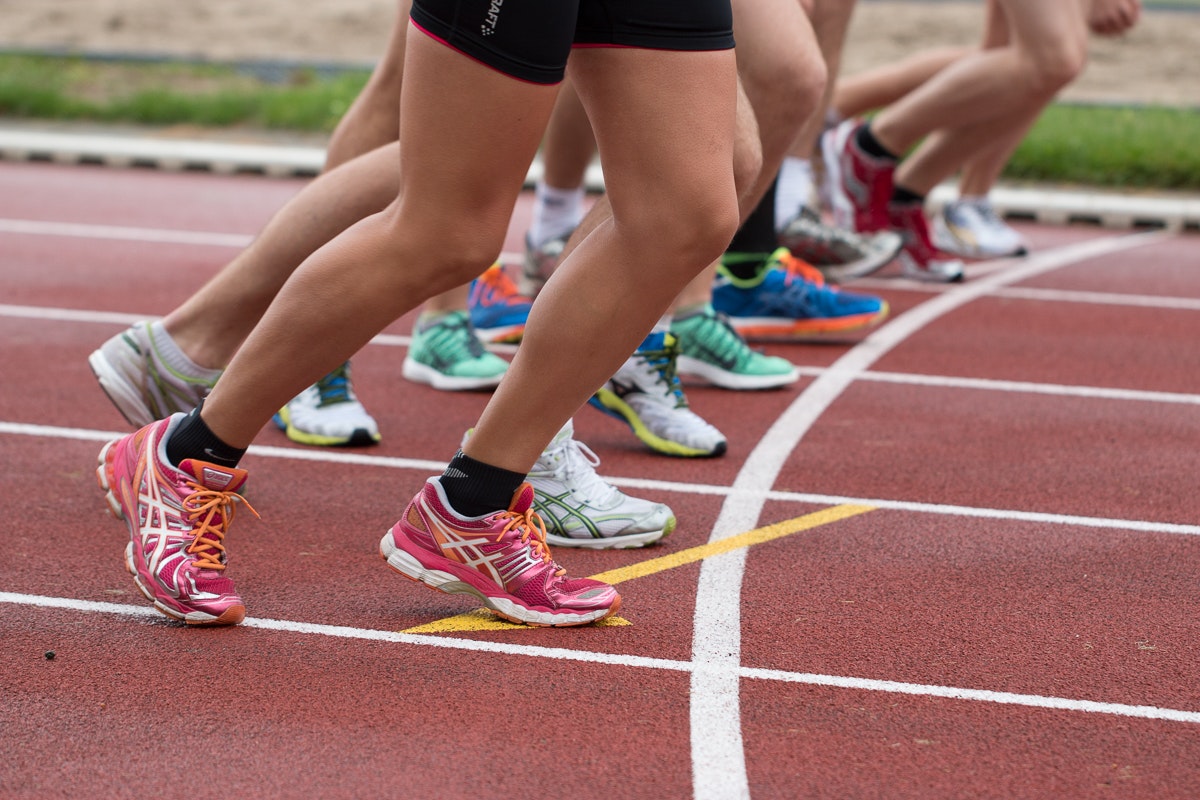 Athletes have many questions about how to fuel for top performance. The Internet abounds with answers—but how do you what’s valid? Here are some trust-worthy answers, based on research presented at the American College of Sports Medicine’s Annual Meeting (May 2018; www.ACSM.org).
Athletes have many questions about how to fuel for top performance. The Internet abounds with answers—but how do you what’s valid? Here are some trust-worthy answers, based on research presented at the American College of Sports Medicine’s Annual Meeting (May 2018; www.ACSM.org).
Do elite athletes, such as professional soccer players, consume the recommended 30 to 60 g carb (120 to 240 calories) per hour during moderate/high intensity training?
Likely not. A soccer study indicates the players barely consumed half that amount (17 g carb (~70 calories)/hour of moderate intensity training and only 14 g (~55 calories) per hour during high intensity training). Soccer players—and other athletes in stop-and-start sports—want to experiment with consuming the recommended amount of fuel. They’ll likely learn they can have greater stamina and endurance at the end of their games—and that can be their winning edge.
Does enjoying a recovery snack after training actually impact on the next day’s exercise session?
Yes, according to 8 female collegiate tennis players who enjoyed 680 calories of recovery food (an apple, a banana, 2 tablespoons peanut butter, and a bagel) daily for 4 weeks after high intensity strength and power training. They reported being able to train hard the next day with 10% less perceived effort compared to sessions without the recovery snack. No one “got fat”; there were no differences in body composition. Knowing that the food was available contributed to better-quality training sessions. Whether psychological or physiological, eating within an hour post-exercise made a positive difference. Perhaps you want to make refueling a consistent habit?
When training in summer heat, what’s best to drink?
In a simulated heat wave study, trained athletes exercised lightly for 3 hours in each of 4 trials. They drank either 1) room temp water (20 degrees C) as desired, 2) cold water (4 degrees c) as desired, 3) no fluid replacement, or 4) full replacement of sweat losses with programmed drinking. Obviously, those who drink nothing suffered the most heat strain. Those who drank ad libitum (as desired) consumed enough to prevent dangerous levels of dehydration. The athletes drank more of the room-temperature water. Preliminary findings suggest the cold 4°C water blunted thirst. Be careful about how much ice you put in your water bottle?
I’m afraid of becoming dehydrated when I train hard in the heat. I plan to push fluids. How much is too much to drink?
While drinking an extra-large volume of fluid before endurance exercise might seem advantageous, the question arises: would doing so actually trigger a diuretic effect and, thus, not provide the desired benefit (hyper-hydration). To test that theory, subjects drank 5, 10, 15 or 20 ml/kg of a sodium-containing beverageThat’s about 12 to 50 ounces (350 ml to 1,400 ml) for a 155-lb (70 kg) athlete. The data suggest that the athletes retained about half of what they drank, regardless of the volume consumed. Thus, if you will be exercising in the heat, tank up as tolerated.
 How much harder do you need to work when exercising in the summer heat at altitude?
How much harder do you need to work when exercising in the summer heat at altitude?
In order to meet the combined demands of increased blood flow to the skin (to dissipate body heat) plus transport of adequate oxygen to the exercising muscles, the heart has to work about 17% harder than at sea level during 30 min of moderate intensity exercise. If you are a fit, healthy person who is just exercising at altitude or just exercising in the heat, the heart works about 10% harder. No wonder exercising at altitude and/or in the heat is tiring! Programmed eating and drinking can help provide the extra energy and fluids needed to support the extra effort. Hikers and skiers, plan ahead…
As a soccer player, I am fearful of getting a concussion. Can I do anything with my diet to help protect my brain from damage?
An effective way to reduce the harmful response to traumatic brain injuries is to routinely consume oily fish (omega-3 fats) during training. Unfortunately, a study with 112 football players (none of whom took fish oil supplements) indicates only 1% of them consumed adequate dietary omega-3s. They would be wise to enjoy more tuna sandwiches, grilled salmon, and other oily fish, as well as take fish oil supplements.
What can I do to reduce my risk of getting injured?
You want to eat well on a daily basis and stay in peak physical condition. Fit individuals have a lower injury risk. A study with Navy SEALs suggests having good knee strength and flexible hamstrings, as well as strong leg muscles, are important factors to reduce the risk of lower-leg muscle & bone injuries.
You also want to maintain an appropriate body weight—not too thin! Among female collegiate athletes, those with components of the Female Athlete Triad (amenorrhea, stress fractures, and/or restrictive eating) experienced more injuries than those who ate enough calories to support normal menses and strong bones. Eat enough!
I eat less than my teammates but I am not losing weight. How can that be???
The less you eat, the more the body down-regulates to conserve energy. A study with collegiate female athletes reported those eating ~1,600 calories a day, as compared to their peers who ate 2,100 calories, conserved energy via a lower resting metabolic rate and reduced thyroid (T3) level. Try getting out of “hibernation” by eating a bit more and enjoy better energy? Consulting with a sports dietitian can help guide this process. To find your local sports nutrition professional, use the referral network at www.SCANdpg.org.
I’ve heard that beets, arugula and nitric oxide supplements can enhance athletic performance by improving blood flow to muscles. Could they also help my grandpa who gets tired when walking?
Likely yes. A promising pilot study in older adults (average age, 78 years) showed that chronic nitric oxide supplementation (40 mg, 3 times/day) was well tolerated and associated with increased ability to walk more efficiently. We need more research to better understand the impact of dietary nitrates and nitric oxide supplements on physical activity and health among elderly people. Till then, we can all enjoy more beets, arugula, celery, and other foods rich in dietary nitrates. They help youthful athletes as well as their grandparents.
Nancy Clark, MS, RD counsels both casual and competitive athletes at her office in Newton, MA (617-795-1875). Her best selling Sports Nutrition Guidebook and food guides for marathoners, cyclists and soccer players offer additional information. They are available at www.NancyClarkRD.com. For her popular online workshop, visit www.NutritionSportsExerciseCEUs.com.
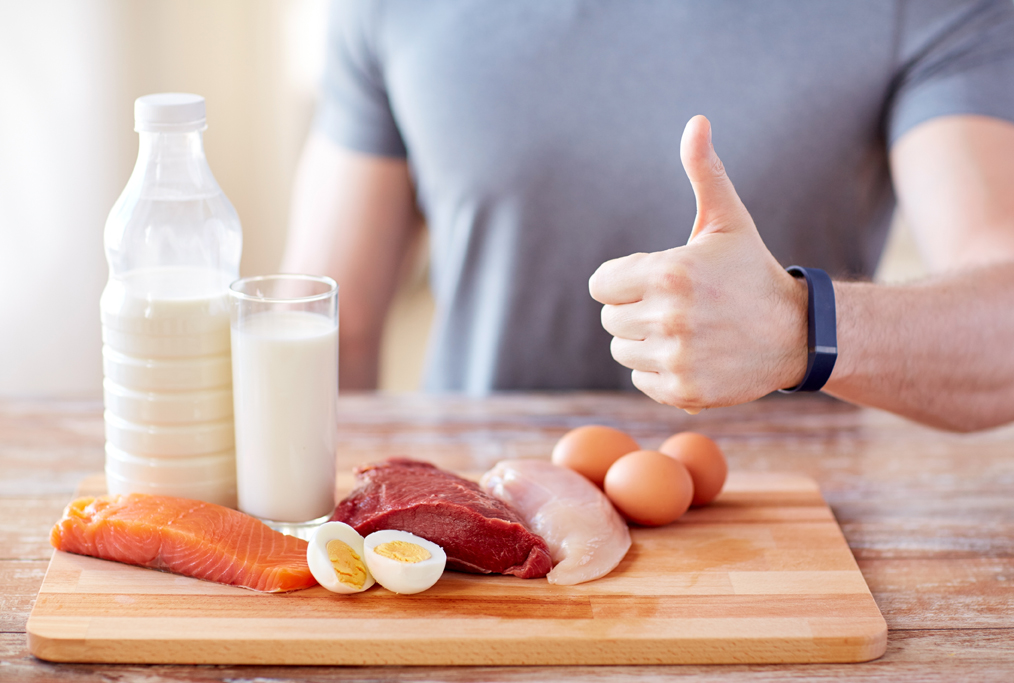
 Staying on top of the latest sports nutrition information is a challenge. That’s why I attend the annual meeting of the American College of Sports Medicine (ACSM). ACSM is a professional organization for sports medicine doctors and health-care providers, sport dietitians, exercise physiologists and sport science researchers. More than 3,000 ACSM members gathered in Minneapolis (May 2018) to share their knowledge and latest research. The following summarizes a Sports Nutrition Update session presented by many leading exercise scientists from around the globe.
Staying on top of the latest sports nutrition information is a challenge. That’s why I attend the annual meeting of the American College of Sports Medicine (ACSM). ACSM is a professional organization for sports medicine doctors and health-care providers, sport dietitians, exercise physiologists and sport science researchers. More than 3,000 ACSM members gathered in Minneapolis (May 2018) to share their knowledge and latest research. The following summarizes a Sports Nutrition Update session presented by many leading exercise scientists from around the globe.
Gareth Wallis PhD, Univ. Birmingham, UK
Which will better enhance athletic performance: A high carbohydrate or a high fat sports diet? Despite growing interest in a high fat sports diet, research does not support it for athletes who exercise at high intensity. Rather, research supports consuming 3 to 4.5 grams carbohydrate per pound (7-10 g carb/kg) body weight per day to be well fueled for hard training and competitive events.
Grains, fruits and veggies are obligatory if you want to exercise hard. Some athletes eat a high fat diet for training and then switch to carb-loading before a competitive event. Bad idea. The enzymes involved in metabolizing carbohydrate become less active, so the muscles are less able to access carbs for fuel when it is needed for winning sprints and surges.
Nicholas Burd PhD, Univ Illinois and Trent Stellingwerff PhD. Canadian Sport Institute
If you want to build muscle, when is the best time to eat protein: before, during or after you lift weights? It might not actually matter because resistance exercise stimulates a muscle-building effect that is most robust within the first 4 hours but lasts for 1 to 2 days. You need not carry a protein shake around the gym! More important is to pace your protein intake evenly throughout the day.
 Resistance exercise is far more potent than a high protein diet for increasing strength and muscle gains. That said, most athletes could expect to see only a gain of about 2 pounds (1 kg) of muscle in 13 weeks. That’s not very much compared to what they really want to see.
Resistance exercise is far more potent than a high protein diet for increasing strength and muscle gains. That said, most athletes could expect to see only a gain of about 2 pounds (1 kg) of muscle in 13 weeks. That’s not very much compared to what they really want to see.
Maximal anabolic (muscle-building) effects are seen with about 25 to 30 g protein per meal. More precisely: 0.75 g protein per pound of body weight per day, or 0.1 to 0.2 g protein per pound per meal in young men. More than that has little or no further benefit. However, these recommendations do change with age. If you are >50 years old, you should target an additional 10 grams of high quality protein (milk, egg, fish, soy) per meal. That’s just a little bit more: a glass of milk or 1.5 ounces of meat-fish-chicken.
Despite rumors, protein does not damage the kidneys nor cause a decline in kidney function. Even people with chronic kidney disease should consume the RDA for protein (0.8 g/kg). A high protein diet also does not cause bone loss. Bone is 40% to 50% protein (collagen).
Over-consuming protein is not only a waste of money but it also stresses the environment. As athletes, we need to take a holistic and whole-foods approach to our diets. Natural protein-rich foods, as opposed to processed supplements, are best (if compatible with your training schedule) because they offer a complex and complete matrix that is more effective than processed proteins. One example of the benefits of whole foods can be seen with eggs. A whole egg promotes 40% greater muscle protein synthesis in the 5 hours post-exercise as compared to eating just the egg white (van Vliet AJCN 2017). Nutrient interactions seem to facilitate a more robust response when compared to eating isolated protein.
Eric Rawson PhD RD, Messiah College
There is no one single sport supplement that works for all athletes. To better understand why, we need a more specific scientific approach to studying supplements based on age, sex, body size, training status, and genetics. That would help us give better advice to target groups of athletes, rather than simply make population-wide recommendations. Many athletes take multiple supplements, so research with “stacked” supplements would also be helpful. Here’s some of what we do know:
Creatine enables an athlete to lift harder in the training room—and build more muscle. But not everyone is a responder. For example, 3 of 11 subjects in a research study had a strong positive response, 5 had a slight response—and 3 did not respond at all (Syrotuik, Bell 2004). Why not? Maybe their daily diets impacted their baseline creatine levels?
Creatine is found in meat and other animal proteins. When a meat-eating athlete goes on a meat-free lacto-ovo-vegetarian diet (milk, eggs, beans) for 26 days, his or her creatine levels will drop. (Lukaszuk, 2005). To normalize the level, athletes could take creatine monohydrate supplements (the most effective form of creatine).
Caffeine is a known energy-enhancing sport supplement. Your response to caffeine will depend on your genetics. Caffeine works best when you are starting to fatigue. Athletes can consume it in coffee, tea, soda, gels, gum, and pills, preferably consumed with carbs.
Sodium bicarbonate is used by some athletes to buffer the lactic acid that builds up during intense bursts of exercise. Research suggests peak response times can vary widely, from 40-165 minutes. (Jones 2016 ISSN). This variability makes it hard for exercise scientists to offer firm recommendations; hence, outcomes vary. Sub-elite athletes seem to respond better then elite athletes. Because sodium bicarbonate easily causes nausea and vomiting, a solution it to take it in gastro-resistant capsules.
 Fluids and Hydration
Fluids and HydrationLinsday Baker, R&D Principal Scientist, Gatorade Sports Science Institute, Pepsi Co.
When you sweat, you lose proportionately more water than sodium, hence sodium levels in the blood increase with dehydration. The amount of sodium you lose in sweat varies from a lot to a little, related to both sweating rate and how well you are acclimated to exercising in the heat, among other factors. A high concentration of sodium in your blood stimulates thirst.
Thirsty athletes have three ways they deal with replacing fluid losses: hit-or-miss ad lib drinking as desired; drinking to quench thirst; and drinking on a set schedule. The effectiveness of these strategies depends on the individual athletes, availability of fluids, the weather, and exercise intensity and duration. If you happen to have a lot of tattoos, take note: tattooed skin may sweat less and excrete saltier sweat.
Nancy Clark, MS, RD counsels both casual and competitive athletes at her office in Newton, MA (617-795-1875). Her best selling Sports Nutrition Guidebook and food guides for marathoners, cyclists and soccer players offer additional information. They are available at www.NancyClarkRD.com. For her popular online workshop, see www.NutritionSportsExerciseCEUs.com.
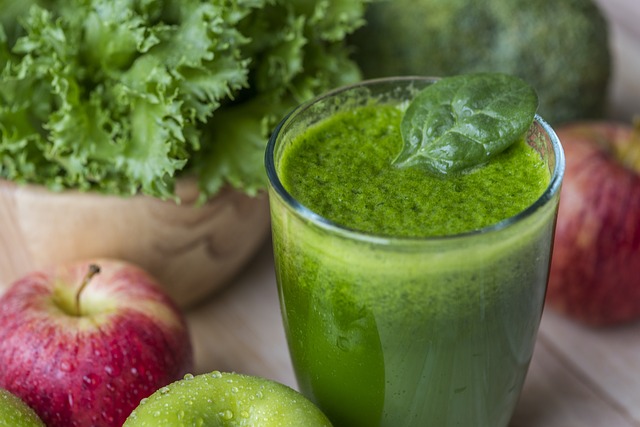
 Anything that promises detoxification sounds a little questionable – like products that claim to “pull toxins out of your system” or “cleanse the liver.” The body does have detoxification mechanisms that are working all the time, and both healthful eating and intermittent fasting can accelerate those processes. Several-day juice “fasts” are one way to tap into the benefits of intermittent fasting and enhance removal of toxins from the body, because the body enhances the removal of toxins when not digesting food and burning more fat for its energy needs. Our fat supply stores toxins, and when we lose body fat we release more toxic waste simultaneously. The body also needs adequate phytochemical and antioxidants for the liver to most effectively process fat-soluble toxins so they can be excreted via the urine.
Anything that promises detoxification sounds a little questionable – like products that claim to “pull toxins out of your system” or “cleanse the liver.” The body does have detoxification mechanisms that are working all the time, and both healthful eating and intermittent fasting can accelerate those processes. Several-day juice “fasts” are one way to tap into the benefits of intermittent fasting and enhance removal of toxins from the body, because the body enhances the removal of toxins when not digesting food and burning more fat for its energy needs. Our fat supply stores toxins, and when we lose body fat we release more toxic waste simultaneously. The body also needs adequate phytochemical and antioxidants for the liver to most effectively process fat-soluble toxins so they can be excreted via the urine.
We’re always either in a fed state or a fasting state; you’ve likely read about the anabolic and catabolic phases of digestion in my books or articles that discuss toxic hunger. When we are eating, digesting, and absorbing nutrients from food, we are in the anabolic phase; think of it like filling your car’s tank with gas. That is followed by the catabolic phase, between meals, in which our energy needs are met by burning energy that we stored during the anabolic phase.
The catabolic phase is when most healing and self-repair happens, and there is evidence that prolonged time in this fasting (catabolic) state has significant health benefits. Also, these benefits don’t necessarily require an extended, several-day water fast, which is difficult for most people to commit to.
I always say, the longer you live in the catabolic phase, the longer you live. Here’s why: Being in a fasting state shifts the body’s cells away from growth, and instead toward a mode of maintenance and repair.1,2 This repair mode is associated with a reduction in insulin and insulin-like growth factor-1 (IGF-1) production; two hormones that play a huge role in health and longevity.3,4 These hormonal changes lead to reduced inflammation, improved insulin sensitivity and stress resistance, slower cell growth, improved immune function, and reduced oxidative stress.5,6 Fasting also stimulates autophagy, an important self-repair process. Autophagy removes damaged components from cells and tissues.7
On a cellular level, many dietary phytochemicals – such as isothiocyanates derived from cruciferous vegetables, sulfur compounds from garlic and onions, and carotenoids from a variety of colorful produce – drive the production of enzymes that enable the excretion of carcinogens and other potentially harmful compounds. This detoxification system counteracts oxidative stress, inflammation, and DNA damage.8 Eating right, in itself, enables valuable detoxification mechanisms.
Caloric restriction adds to this, and has been the one intervention that extends life in a number of different species. Adding periodic calorie restriction to an already nutrient-rich diet could intensify the body’s ability to heal and repair by extending the amount of time in the fasting repair mode and reducing growth-related signals.4 It also can enhance the breakdown and excretion of fat-soluble toxins; lowering the body’s toxic load.
Intermittent fasting or a juice detox could also be a warm-up to incorporating occasional water fasting. Back in 1995, in my book, Fasting and Eating For Health, I discussed my experience of how fasting improved health parameters in my patients. I also co-authored a series of case reports documenting remission of autoimmune diseases following supervised fasting.9 More recently, fasting has been shown to have dramatic regenerative effects on the immune system. Studies over the past few years in animals and humans have suggested that fasting signals the immune system to discard old and damaged cells and generate new cells by increasing hematopoietic stem cells. The reduction in IGF-1 signaling was a necessary factor in this immune boosting. 6,10
Intermittent fasting – usually by reducing calorie intake dramatically a few days per week – is a method for getting some of the benefits of longer-term fasting. Human studies on intermittent fasting suggest it improves insulin sensitivity and promotes weight loss.2,11,12
I recommend incorporating a juice detox into your life, with vegetable juices plus one salad per day for several days, to act as a method of intermittent fasting, to slow aging and prolong lifespan as an easier alternative to water fasting. Water fasting has a rapidly decreasing effect at removing toxins, as nutrients necessary for the removal also decrease as the fast progresses. Also, juice fasting enables the participants to continue to work and is safer, compared to water fasting, as it prevents dehydration, loss of electrolytes and fainting. It is also compatible for people who must remain on medications, so almost anyone can participate.
 Figure out a timeline you’re comfortable with. You may want to try juicing one day a week, or you may want to try a week-long juice cleanse.
Figure out a timeline you’re comfortable with. You may want to try juicing one day a week, or you may want to try a week-long juice cleanse.Originally printed on DrFuhrman.com. Reprinted with permission from Dr. Fuhrman.
Dr. Fuhrman is a board-certified family physician specializing in nutritional medicine. He is President of the Nutritional Research Foundation and the author of 6 NY Times bestselling books, including The End of Heart Disease. Visit him at DrFuhrman.com.
References


Performance starts with fueling, not training! The best way to fuel for top performance seems to be a debatable topic these days. To keep on top of the science regarding food, exercise & performance, I look to SCAN, the Sports & Cardiovascular Nutrition practice group of the Academy of Nutrition and Dietetics (AND). Here are some tidbits of information from this year’s 35th annual meeting in Keystone CO, May 2018.
In your search for sports nutrition information, Leslie Bonci RD CSSD wants you to find #ScienceNotOpinionand #FactsOverFallacy. Here’s some of what science supports:
—Exercising in a fasted stated leads to muscle breakdown. Think twice before eating nothing before morning exercise.
—The keto diet does not enhance performance, but rather leads to a down-regulation of the enzymes needed by carbohydrates to fuel a surge or a winning sprint at an event.
—Whole30 and Intermittent Fasting are just two more fads to add to the list of unsuccessful diets. You never want to embark upon a diet you won’t maintain for the reset of your life. Otherwise, diet backlash (binge eating, weight gain) takes it toll. Learn how to eat smarter, not diet harder!
—Carb-phobia refuses to go away, despite the plethora of research supporting the performance benefits of a carb-based sports diet. #Don’tDreadTheBread.
When it comes to fueling during extended exercise, Jeukendrup stated the recommendations are similar for both athletes and less fit people: For exercise that lasts from 60 to 90 minutes, you want to maintain high energy by consuming from 30 to 60 grams of carbohydrate (120 to 240 calories) per hour of exercise. If you are a weekend warrior who exercises hard for more than two hours, you want to target 60 to 90 grams carh (240 to 360 calories) per hour. You might have to start at the low end of the calorie range while you train your gut to tolerate that much fuel. (The gut is trainable!). You’ll discover that exercise is much more fun when you have high energy!
 Research suggests that older people, including athletes, should increase their protein intake to 1.4 g to 1.6 g/kg per day, and up to 40 grams after hard exercise. Exercise physiologist Robert Murray, PhD,(www.sportsscienceinsights.com) reports this could help boost the muscle-building response to exercise. If you are an older athlete who weighs 150 pounds (68 kg), this means. 95 to 110 gram protein per day. That’s about 25 grams, four times a day—much more than in a bowl of oatmeal or a handful of nuts!
Research suggests that older people, including athletes, should increase their protein intake to 1.4 g to 1.6 g/kg per day, and up to 40 grams after hard exercise. Exercise physiologist Robert Murray, PhD,(www.sportsscienceinsights.com) reports this could help boost the muscle-building response to exercise. If you are an older athlete who weighs 150 pounds (68 kg), this means. 95 to 110 gram protein per day. That’s about 25 grams, four times a day—much more than in a bowl of oatmeal or a handful of nuts!
Nancy Clark, MS, RD counsels both casual and competitive athletes at her office in Newton, MA (617-795-1875). Her best selling Sports Nutrition Guidebook and food guides for marathoners, cyclists and soccer players offer additional information. They are available at www.NancyClarkRD.com. For her popular online workshop, see www.NutritionSportsExerciseCEUs.com.

Definition of Sports supplement: A food, food component, nutrient, or non-food compound that is purposefully ingested in addition to the habitually consumed diet with the aim of achieving a specific health and/or performance benefit.
 The global sports nutrition supplement market (including sports foods, drinks and supplements) accounted for $28+ billion in 2016 and, with the help of rigorous advertising, is expected to almost double by 2022. How many of the products are moneymaking ploys marketed to uninformed athletes? Unfortunately, too many.
The global sports nutrition supplement market (including sports foods, drinks and supplements) accounted for $28+ billion in 2016 and, with the help of rigorous advertising, is expected to almost double by 2022. How many of the products are moneymaking ploys marketed to uninformed athletes? Unfortunately, too many.
Due to the plethora of products that have infiltrated gyms, fitness centers and professional sports teams alike, I get questioned by fitness exercisers and aspiring Olympians: Which of these supplements are actually effective?? Hands down, the most effective way to enhance sports performance is via your day-to-day sports diet, coordinated with a consistent training program. Eating the right foods at the right times creates the essential foundation to your success as an athlete.
That said, specific sports supplements could make a minor contribution to small performance improvements for certain elite athletes. If you wonder if the grass is greener on the other side of your sports diet’s fence, here are some facts from the 2018 IOC Consensus Statement: Dietary Supplements and the High-Performance Athlete (1).
Supplements are used for many different reasons. Here’s a breakdown of supplements by categories.
A supplement with strong evidence to indirectly improve performance by helping build muscle is creatine monohydrate. Questionable supplements without strong evidence for athletes include gelatin and HMB.
If some supplements are good, would more be better? No, supplements can cause harm. Too much iron can lead to iron overload. Too much caffeine increases anxiety. Supplements are linked to liver toxicity, heart problems and seizures. In the USA in 2015, dietary supplements contributed to about 23,000 emergency department visits. Manufacturers are not required to show safety or assure quality of a supplement. Athletes beware— and try eating better to perform better?
Nancy Clark, MS, RD, CSSD counsels both casual and competitive athletes at her office in Newton, MA (617-795-1875). Her best selling Sports Nutrition Guidebook and food guides for marathon-ers, cyclists and soccer players offer additional information. They are available at www.NancyClarkRD.com. For her popular online workshop, see www.NutritionSportsExerciseCEUs.com.
References
Maughan R, Burke L, Dvorak J et al. IOC Consensus Statement: Dietary Supplements and the High-Performance Athlete Intl J Sports Nutr Exerc Metab 2018, 28: 104-125.
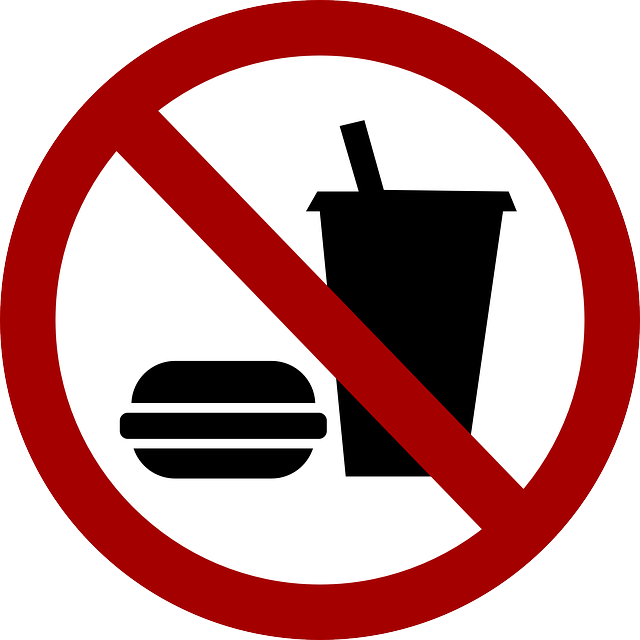
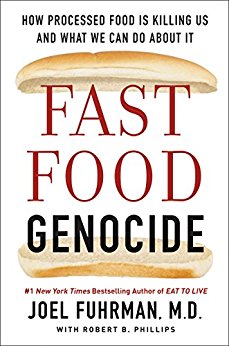 In his latest book, Fast Food Genocide, Dr. Fuhrman details the shocking role diet has played in derailing the American dream for large segments of our population. He explains how these foods destroy not only our physical health, leading to cancer, diabetes, obesity, and heart disease — he also explores the previously overlooked association of diet’s influence on behavior, emotional health and intellect. The fast and processed food industries keep people hooked on their unhealthy, highly addictive products and that has led to a national health crisis. This tragic and far-reaching epidemic of inferior nutrition can be turned around, and Dr. Fuhrman offers hope, explaining the powerful way a Nutritarian Diet can solve what has become a national health crisis. It is an eye-opening book all of us need to read and share with our friends. Below, Dr. Fuhrman answers what motivated him to write this book and some of the questions surrounding it.
In his latest book, Fast Food Genocide, Dr. Fuhrman details the shocking role diet has played in derailing the American dream for large segments of our population. He explains how these foods destroy not only our physical health, leading to cancer, diabetes, obesity, and heart disease — he also explores the previously overlooked association of diet’s influence on behavior, emotional health and intellect. The fast and processed food industries keep people hooked on their unhealthy, highly addictive products and that has led to a national health crisis. This tragic and far-reaching epidemic of inferior nutrition can be turned around, and Dr. Fuhrman offers hope, explaining the powerful way a Nutritarian Diet can solve what has become a national health crisis. It is an eye-opening book all of us need to read and share with our friends. Below, Dr. Fuhrman answers what motivated him to write this book and some of the questions surrounding it.
Genocide — the deliberate destruction of a population — is the most accurate way to describe fast food’s devastating effects on our society. Processed, nutrient-barren products are designed by the food industry to be highly addictive, cheap to produce, and highly profitable. These products do not contain the nutrients humans need to thrive, and in those using them as a primary food source, it has created an explosion of disease, much suffering and death. Fast food and processed foods also damage our genes, which we pass on to our children and grandchildren, and we are seeing dangerous increases in autism, learning disabilities, allergies, autoimmune disease and childhood cancer. This must be stopped.
I define fast food in two ways: First, it is the food served at commercial chain restaurants, where processed meats, pizza, burgers, French fries, pretzels, soft drinks, and rich desserts are made in an assembly-line process, with commercial ingredients that are duplicated and dispersed all over the world. Second, it is any commercially-made convenience food that includes artificial ingredients, processed grains, sweeteners, salt, and oil, all with high-caloric concentration and minimal nutrient content. These foods have now become the majority of calories consumed in America.
A person who eats fast food, fried food and processed food has an increased risk of cancer, obesity, diabetes, autoimmune disease, depression, and mental illness. Even moderate use of fast food is dangerous. For example, one serving of commercial French fries per week is linked to an over 25 percent increase in risk of developing breast cancer. The World Health Organization has declared that processed meats are a class 1 carcinogen in humans, which places them in the same category as asbestos and cigarette smoking. Fake food produces cancer-promoting signals, damages blood vessel and builds plaque. The food is most often high in calories and fattening. Weight gain has its own dangerous consequences. Body fat produces pro-inflammatory signals, raises blood pressure, drives insulin resistance and secretes growth signals that promote cancer.
The scope of the effects of fast food on the brain is not yet known, but based on what we know so far, we greatly underestimate these effects, especially the effects on the brains of children. A single episode of elevated blood sugar has been shown to have negative effects on attention and memory. Eating commercial baked goods and fast food is primary causative factor in mental illness and major depression, and brain imaging studies have suggested that elevated blood sugar impairs the brain’s ability to process emotion. For young children, fast food, candy and soda consumption are linked to behavior and attention problems, and depression and suicide in teens. Mental illness now affects one in five in America, and our poor diet is at the foundation of this epidemic.
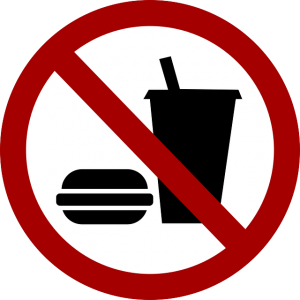 Why Isn’t This Information More Widely Known?
Why Isn’t This Information More Widely Known?Some reasons why we are ignoring the devastating health crisis that is right before our eyes is that; we believe food industry propaganda and easily misled by conflicting information; we develop a desire for become addicted to these toxic foods; and we believe in the heavily promoted dogma that modern medical care can save us from nutritional-induced tragedies.
Food companies have discovered how to feed the most people in the most efficient and cost-effective manner to maximize profits. While the marketing spin promotes moderate consumption as safe, and encouraged by social norms. Scientific studies demonstrate otherwise.
Joel Fuhrman, M.D.Dr. Fuhrman is a board-certified family physician specializing in nutritional medicine. He is President of the Nutritional Research Foundation and the author of 6 NY Times bestselling books, including The End of Heart Disease. Visit him at DrFuhrman.com